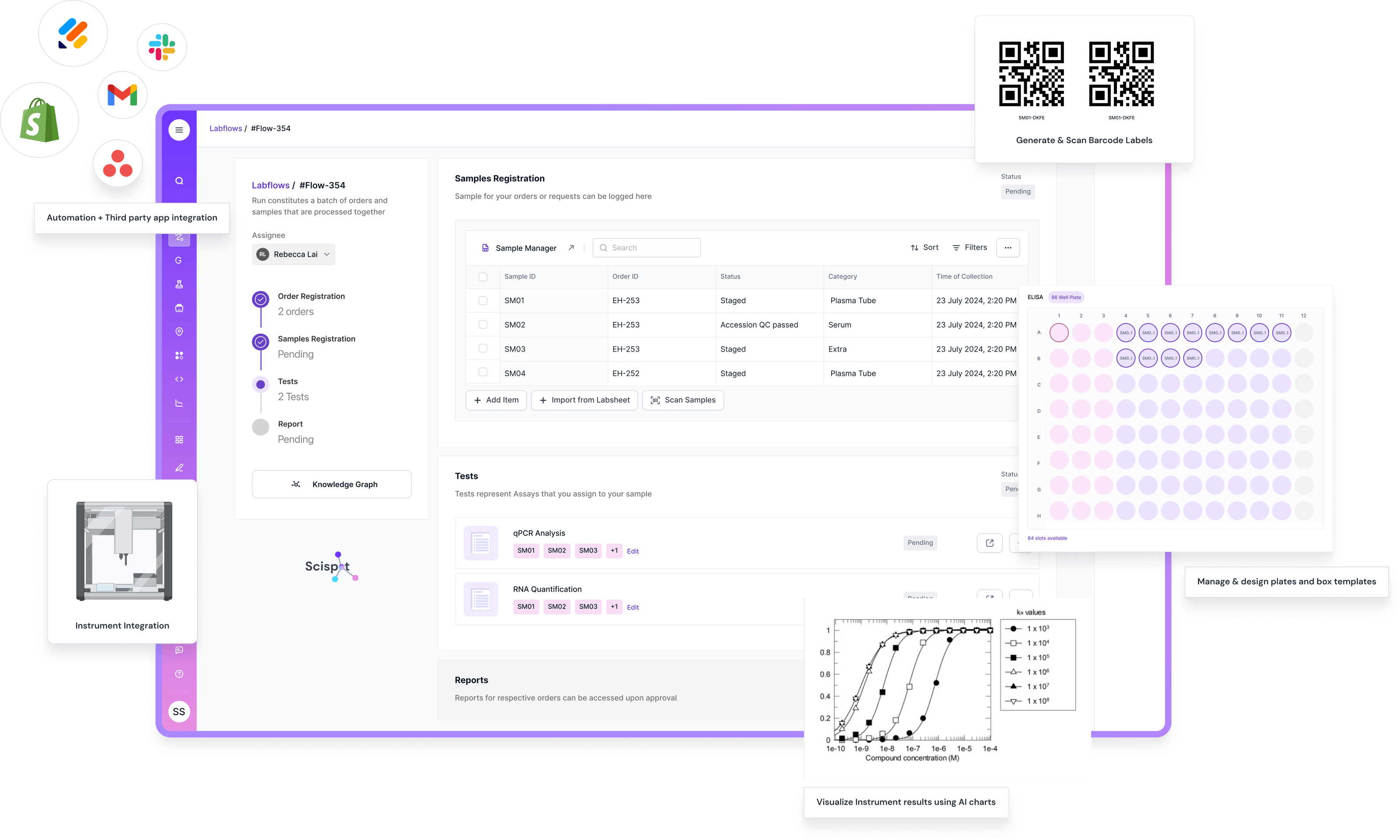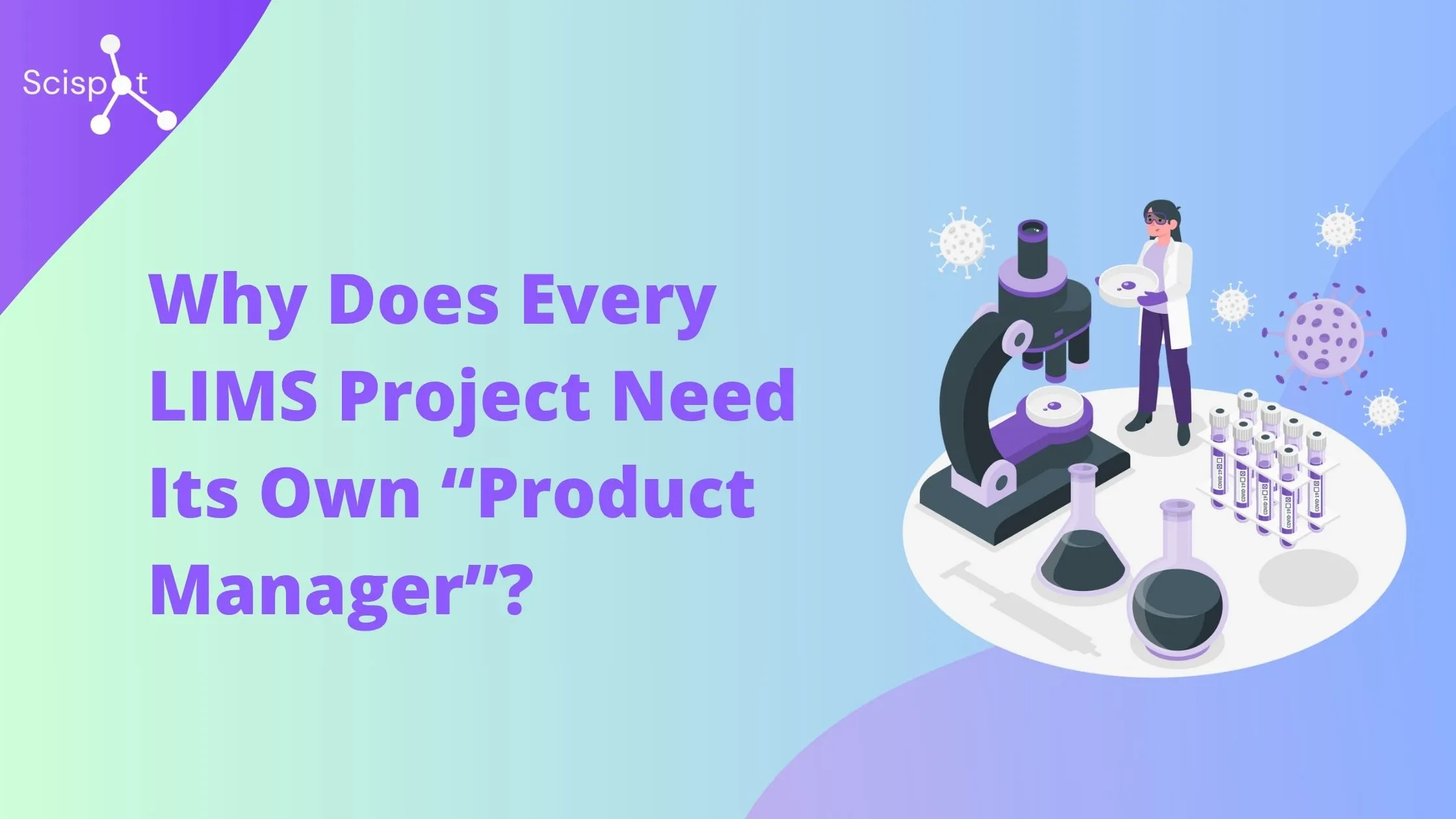Labs often ask: “Can’t our scientists and IT team just handle the LIMS setup together?” In theory, yes. In practice, that’s why many implementations stall.
A modern LIMS like Scispot is fast to configure and quick to launch, but success still hinges on one thing: ownership. Someone on your side must sit in the driver’s seat. Call them your LIMS champion, product manager, or system lead—the title doesn’t matter, the function does. Scispot positions itself as a modern LIMS alternative with no‑code configuration, APIs, and integrations, but these strengths reach full value only when a single person is accountable for guiding choices and tradeoffs.

When no one owns the system, decisions fragment. Meetings multiply. Everyone agrees it’s a “team effort,” yet no one keeps the build aligned with real lab needs. The result is familiar: delayed launches, duplicated effort, and a digital system that mirrors chaos instead of curing it. The fix is boring and powerful. Name one owner. This mirrors agile product practice, where the Product Owner is “one person, not a committee,” responsible for maximizing value and ordering the backlog. That clarity speeds decisions and reduces churn.
Independent guidance in the lab world points the same way. Clinical Lab Products recommends assigning a LIMS/LIS implementation administrator to act as the single point person who gathers requirements and works directly with the vendor through installation, configuration, and training. In plain terms, that is your LIMS owner.

Change adoption is where many rollouts stumble. Prosci’s research shows that projects with extremely effective, active sponsors are far more likely to meet objectives than those with ineffective sponsorship. A named LIMS owner, paired with an executive sponsor, gives you that visible leadership day to day and keeps momentum after go‑live. This is why ownership is not overhead; it is the risk reducer.
There is also a schedule reality. Traditional LIMS deployments often take months, not weeks. Public review data on G2 lists average implementation times of around nine months for some systems and seven months for others. Long timelines magnify the cost of slow decisions. A single owner shortens those decision loops and avoids rework.
At Scispot, we’ve seen the opposite of drift when a single champion partners with our implementation team. Together, they configure workflows quickly, make tradeoffs consciously, maintain data consistency across departments, and drive adoption after go‑live. Scispot’s consulting style is not transactional—it is collaborative. The team works side by side with your champion to translate bench‑level processes into structured, compliant, and automated workflows. The work includes guided configuration sprints, migration planning, validation support, and role‑based training—not just software handoff. Scispot also advertises “white‑glove” support with personalized setup, unlimited training, and ongoing assistance, which complements your owner’s role and accelerates the first 90 days.

The most common pushback is, “We can’t afford to pull someone off the bench full time.” Look at where the time actually goes. Without a single owner, decision latency grows, issues get revisited, and configurations are undone and redone. That is the expensive path. Assigning one person—even part‑time during design and build—concentrates context and prevents thrash.
You wouldn’t develop a new analytical method without assigning a method owner. Don’t build a new digital system without a dedicated system owner. With Scispot, you gain a partner that treats implementation as a shared mission, not a handoff, while your owner keeps the system honest to how your lab really works. That combination ships faster, lands cleaner, and keeps improving long after launch.





.webp)
.webp)
.webp)



